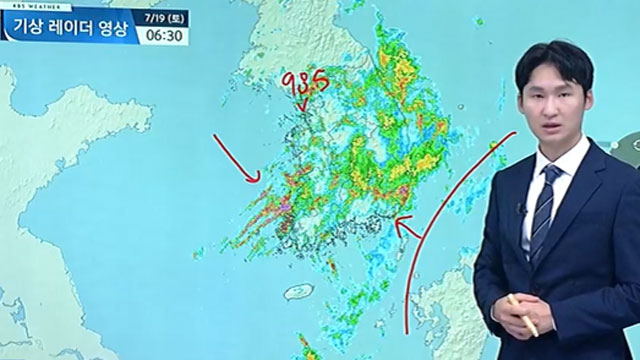[News Today] S.KOREA LAUNCHES 3RD SPY SATELLITE
입력 2024.12.23 (16:33)
수정 2024.12.23 (16:34)
읽어주기 기능은 크롬기반의
브라우저에서만 사용하실 수 있습니다.
[LEAD]
South Korea's third military reconnaissance satellite was successfully launched last night. Equipped with a high-performance SAR radar, this radar enables all-weather surveillance capabilities. With this third satellite now in orbit, South Korea's monitoring of North Korea is expected to become more faster and precise.
[REPORT]
Soundbytes: 3, 2, 1!
South Korea's third military reconnaissance satellite was launched from the Vandenberg Space Force Base in California.
Launched at 8:34 p.m. on Saturday, Korea time, it separated from the rocket 51 minutes later, entered its target orbit successfully, and succeeded in contacting the ground station 2 hours and 56 minutes after the launch.
Like South Korea's second spy satellite, the third one is equipped with a powerful synthetic aperture radar known as SAR.
It transmits radio waves to the ground and visualizes the signals reflected back.
Although the images are in black and white, the satellite can carry out reconnaissance day and night, regardless of weather conditions.
The first satellite equipped with EO/IR sensors using visible rays and infrared light are capable of getting clear images but not when the weather is bad.
Operating the latest satellite together with the first one minimizes the weather factor and allows multi-angle imaging, thereby making it possible to conduct multidimensional surveillance of North Korea.
Another upside is a shortened reconnaissance cycle.
The first satellite can shoot the Korean Peninsula only twice a day by passing over the polar regions. But the second and third satellites can film up to six times a day by orbiting Earth around the equator.
Seok Jong-gun/ Minister, Defense Acquisition Program Administration
After satellites 4, 5 and ultra-small satellites are launched, North Korea can be monitored dozens of times a day.
When two more recon satellites are launched next year, North Korea can be monitored at a two-hour interval. Furthermore, the deployment of super-small satellites is projected to shorten the cycle to under 30 minutes.
■ 제보하기
▷ 카카오톡 : 'KBS제보' 검색, 채널 추가
▷ 전화 : 02-781-1234, 4444
▷ 이메일 : kbs1234@kbs.co.kr
▷ 유튜브, 네이버, 카카오에서도 KBS뉴스를 구독해주세요!
- [News Today] S.KOREA LAUNCHES 3RD SPY SATELLITE
-
- 입력 2024-12-23 16:33:36
- 수정2024-12-23 16:34:56
[LEAD]
South Korea's third military reconnaissance satellite was successfully launched last night. Equipped with a high-performance SAR radar, this radar enables all-weather surveillance capabilities. With this third satellite now in orbit, South Korea's monitoring of North Korea is expected to become more faster and precise.
[REPORT]
Soundbytes: 3, 2, 1!
South Korea's third military reconnaissance satellite was launched from the Vandenberg Space Force Base in California.
Launched at 8:34 p.m. on Saturday, Korea time, it separated from the rocket 51 minutes later, entered its target orbit successfully, and succeeded in contacting the ground station 2 hours and 56 minutes after the launch.
Like South Korea's second spy satellite, the third one is equipped with a powerful synthetic aperture radar known as SAR.
It transmits radio waves to the ground and visualizes the signals reflected back.
Although the images are in black and white, the satellite can carry out reconnaissance day and night, regardless of weather conditions.
The first satellite equipped with EO/IR sensors using visible rays and infrared light are capable of getting clear images but not when the weather is bad.
Operating the latest satellite together with the first one minimizes the weather factor and allows multi-angle imaging, thereby making it possible to conduct multidimensional surveillance of North Korea.
Another upside is a shortened reconnaissance cycle.
The first satellite can shoot the Korean Peninsula only twice a day by passing over the polar regions. But the second and third satellites can film up to six times a day by orbiting Earth around the equator.
Seok Jong-gun/ Minister, Defense Acquisition Program Administration
After satellites 4, 5 and ultra-small satellites are launched, North Korea can be monitored dozens of times a day.
When two more recon satellites are launched next year, North Korea can be monitored at a two-hour interval. Furthermore, the deployment of super-small satellites is projected to shorten the cycle to under 30 minutes.
이 기사가 좋으셨다면
-
좋아요
0
-
응원해요
0
-
후속 원해요
0















이 기사에 대한 의견을 남겨주세요.